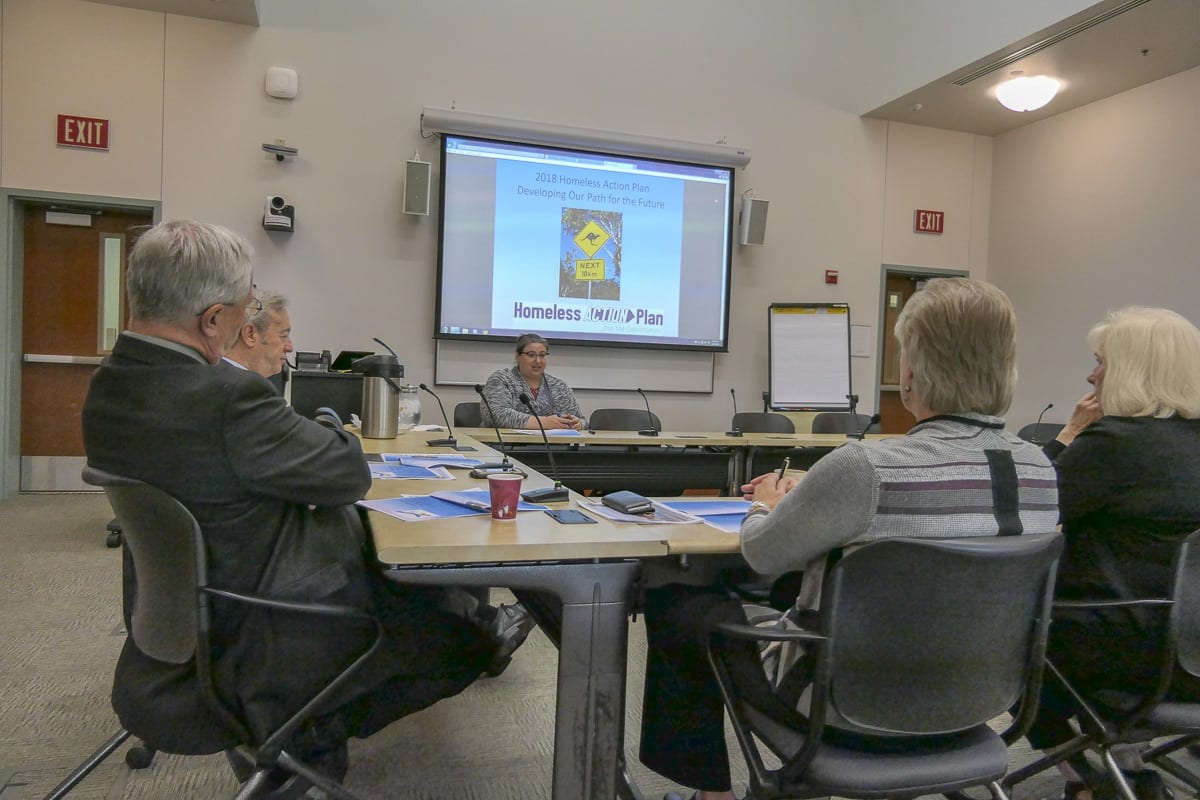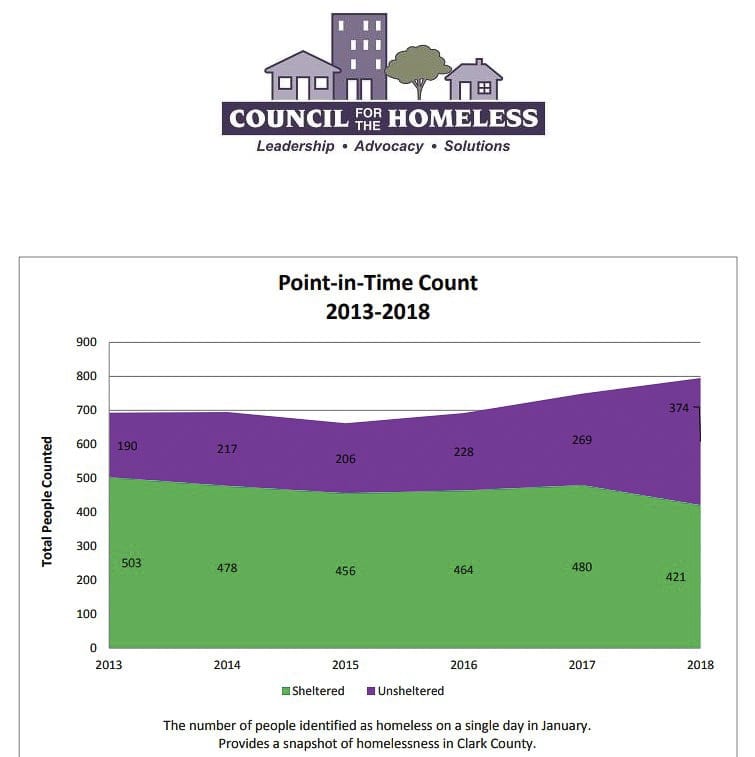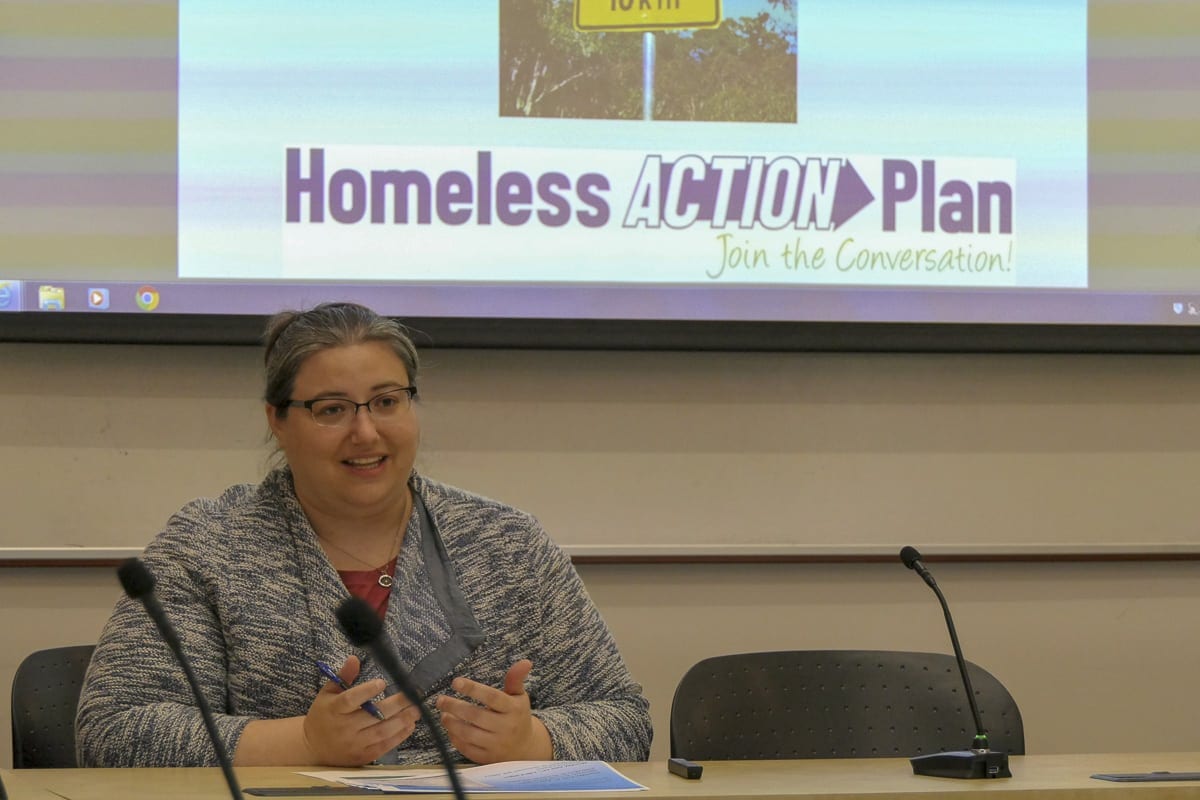The five-year plan approved in 2015 is proving inadequate for the affordable housing crisis hitting the region
CLARK COUNTY — Just three years since Clark County adopted a five-year action plan to combat the area’s growing homelessness crisis, area leaders are re-visiting the issue. The latest point-in-time count of the local homeless population, done last January, reached an all-time high of almost 800 individuals. And for the first time, nearly half of them were living outside of a shelter.

“Folks are visible and living in homelessness all over Clark County,” Kate Budd, executive director of the Council for the Homeless, told Clark County Council members at a recent work session. “We’ve now seen that there are people who are visible in downtown Camas for example, as well as in Battle Ground. And so this is a great opportunity to have that full county focus that may not have been needed back in 2014 because there was just fewer people throughout the county experiencing homelessness.”
Budd believes the majority of the blame for the rapid rise in the homeless population lies with the local housing market.
“In 2014 the fair market rent for a two-bedroom, one bath unit was about $930,” Budd said, “Fast forward four years, and that same unit is $1,320. And that is the greatest challenge that we hear from folks who are newly homeless in particular is that their rents just continued to increase and they couldn’t sustain.”
The monthly cost for a place to live isn’t the only problem. Budd says many people they hear from could scrape together enough for rent every month, but the move-in cost is the largest barrier. The average rental unit can cost between $2,500 and $3,000 just to get into. Even working 2-3 jobs, many people are finding that up-front money difficult to come by.
Councilor Eileen Quiring said the county needs to look at what it can do to help bring down the cost of housing. “We clearly know why rent has gone up,” she says, “because housing has gone up. Taxes have gone up. And that recording fee has gone up to $75. Everything has gone up.”
The Council for the Homeless held seven public forums across the county, and is now asking for more input through an online survey that will be open through July 13. They’re asking for feedback from the community, local homeless service providers, as well as people who are currently homeless.
The result of all that feedback will come to the Clark County council in either September or October, to be used in updating the Homeless Action Plan. Budd says things changed so rapidly after the end of the recession, that it’s been difficult to forecast what would happen with the housing market.
“We’re particularly seeing the number of seniors — those particularly who are living on a fixed income, some of whom have disabilities as well — those people are increasing among the population of people who are homeless,” Budd says.

The city of Vancouver passed an ordinance requiring landlords to give at least 45-days notice before a rent increase, and 60-day notices to vacate. In the rest of the county, however, rent increases need only a 20-day heads up.
“When given the minimum amount of 20 days notice, it’s very difficult for [people] to find a unit,” says Budd, “just because there aren’t many units available in the community.”
There have been some improvements in that area, she admits. In 2014, rental vacancies were only about two percent. A healthy market has about five percent vacancy. The most recent numbers peg the local vacancy rate at closer to 4.5 percent, but the big unknown is whether supply is catching up with demand, or whether rental prices are outpacing the market.
A key piece of data when it comes to determining how best to spend the limited dollars the county has for affordable housing and homeless services, is in figuring out who’s homeless by choice, who is in need of mental health services, and who is simply needing help getting back on their feet.
“We can only do what we can do locally, and I understand,” said Councilor Jeanne Stewart, “but somehow the whole picture I think sometimes escapes us when we’re trying to figure out how to help them be more self-sufficient, and healthy, and have a safe place to live.”

Council for the Homeless attempts to answer that question through surveys of homeless people, in addition to gathering other data where available. Stewart also wondered whether they had seen an influx of homeless from Portland, after some services there were shut down due to various issues.
“What we find is that over 80 percent of the folks are from Clark County,” Budd responded. Most of the others are usually moving through the area. Most people who are recently homeless, she says, tend to like to stay near where they were.
Outside of all the other factors potentially influencing the rise in homelessness around Clark County, is just the increase in population overall.
“Population in general throughout Clark County is increasing significantly, and so whenever we have an increase in population, all the sub-populations tend to increase as well,” Budd says. “So even just on that theory it makes sense why we’re seeing an increase in the number of people experiencing homelessness.”
The Action Plan ultimately adopted by the county council, as well as the city of Vancouver and other cities throughout the county, will help guide the Council for the Homeless when it comes to applying for grant money, most of which is distributed through the Department of Community Services. The plan going forward will be to examine the Homeless Action Plan every 3-4 years, rather than five, given how quickly things seem to be changing now.




